What we´re reading… March 2023
The March issue of Transplantation, the official Journal of ILTS and the Transplantation Society, is out now.
A must-read for anyone working in the field of liver transplantation.
Article selections by Ryan Chadha, Abdul Rahman Hakeem, Felipe Alconchel, Onur Keskin.
HEPATOLOGY
Jama
Association of FDA Mandate Limiting Acetaminophen (Paracetamol) in Prescription Combination Opioid Products and Subsequent Hospitalizations and Acute Liver Failure.
Importance: In January 2011, the US Food and Drug Administration (FDA) announced a mandate to limit acetaminophen (paracetamol) to 325 mg/tablet in combination acetaminophen and opioid medications, with manufacturer compliance required by March 2014. Objective: To assess the odds of hospitalization and the proportion of acute liver failure (ALF) cases with acetaminophen and opioid toxicity prior to and after the mandate. More
Lancet Gastroenterology and Hepatology
Rifaximin-α for liver fibrosis in patients with alcohol-related liver disease (GALA-RIF): a randomised, double-blind, placebo-controlled, phase 2 trial
Background: Alcohol is the leading cause of liver-related mortality worldwide. The gut-liver axis is considered a key driver in alcohol-related liver disease. Rifaximin-α improves gut-barrier function and reduces systemic inflammation in patients with cirrhosis. We aimed to compare the efficacy and safety of rifaximin-α with placebo in patients with alcohol-related liver disease. More
Liver Transplantation
Saroglitazar improves nonalcoholic fatty liver disease and metabolic health in liver transplant recipients
Background: Nonalcoholic fatty liver disease (NAFLD) is common after liver transplantation (LT) and associated with increased metabolic burden. Currently, there are is a paucity of investigations into treatment of post-LT NAFLD. In the present study, we evaluated the safety and efficacy of saroglitazar, a novel dual PPAR α/γ agonist, on treatment of post-LT NAFLD and metabolic burden. More
SURGERY
American Journal of Transplantation
Anatomical Variations of Left Hepatic Vein and Outflow Reconstruction Techniques in Paediatric Living Donor Liver Transplantation
Anatomical variations of left hepatic vein (LHV) are observed in nearly a third of left lateral segment (LLS) donors in living donor liver transplantation (LDLT). There is paucity of studies and no structured algorithm for customised outflow reconstruction in LLS grafts with variant anatomy. Analysis of a prospectively collected database of 296 LLS paediatric LDLT was done to identify different venous drainage patterns of segments 2 (V2) and 3 (V3). More
Liver Transplantation
Initial outcome of external biliary drainage in living donor liver transplantation with pure laparoscopic donor hepatectomy
Biliary complications after living donor liver transplantation (LDLT) are the most common and intractable complications due to both surgical and nonsurgical factors. External biliary drainage (EBD), a surgical option to prevent biliary complications, has recently been adopted in the era of pure laparoscopic donor right hepatectomy, which may result in increased bile duct problems in the recipients. This study retrospectively reviewed the patients who underwent LDLT with duct-to-duct anastomosis between July 2017 and October 2020 to analyzed the initial outcomes of EBD and to compare the incidence of biliary complications in adult LDLT recipients who underwent duct-to-duct anastomosis with or without EBD. More
Annals of Surgery
Lifestyle Optimization Leads to Superior Liver Regeneration in Live Liver Donors and Decreases Early Allograft Dysfunction in Recipients: A Randomized Control Trial
Introduction: The aim of the current RCT was to assess the efficacy of donor lifestyle optimisation on liver regeneration and outcome following live donor liver transplantation(LDLT). More
ANESTHESIOLOGY AND CRITICAL CARE
Liver Transplantation
Positron emission tomography myocardial perfusion imaging (PET MPI) findings predictive of post-liver transplant major adverse cardiac events
Background: Positron emission tomography myocardial perfusion imaging (PET MPI) is a noninvasive diagnostic test capable of detecting coronary artery disease, structural heart disease and myocardial flow reserve [MFR]. We aimed to determine prognostic utility of PET MPI to predict post-LT major adverse cardiac events (MACE). More
Journal of Cardiothoracic and Vascular Anesthesia
2022 Clinical Updates in Liver Transplantation
In 2022, the United States preformed surpassed their one millionth transplant procedure. This impressive milestone demonstrates the value and continued need for life-saving transplants. The specialty of transplant anesthesiology has seen similar growth recently and the contributions made to improve care of transplant patients remains important. New technology offers improved ways to preserve liver grafts for transplant. More
Liver Transplantation
Cardiac index and hepatopulmonary syndrome in liver transplantation candidates: The Pulmonary Vascular Complications of Liver Disease Study
Background and aims: Hepatopulmonary syndrome (HPS) and a hyperdynamic circulation are common complications of advanced liver disease, but the relationship between HPS and cardiac index (CI) is poorly understood. We sought to compare CI in patients with and without HPS and to assess the relationship between CI and symptoms, quality of life (QOL), gas exchange, and exercise capacity among liver transplantation (LT) candidates. More
ADDITIONAL READING FROM ILTS
Enhanced recovery for liver transplantation: recommendations from the 2022 International Liver Transplantation Society Consensus Conference
The ERAS4OLT.org collaborative, partnered with the International Liver Transplantation Society, performed systematic literature reviews on the effect of 32 relevant enhanced perioperative recovery elements on short-term outcomes. More
Enhanced recovery after surgery programs improve short-term outcomes after liver transplantation – A systematic review and meta-analysis
This systematic review aimed to investigate the available quality of evidence (QOE) of enhanced recovery after surgery (ERAS) for liver transplantation (LT) on short-term outcomes, grade recommendations, and identify relevant components for ERAS protocols. More





